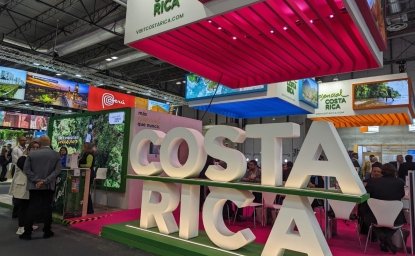
A blog of the Latin America Program
Saving South America’s Forests
By Anders Beal
There is perhaps no greater menace to South America’s diverse biomes than runaway deforestation, a threat to critical ecosystems and an accelerant to climate change. In 2019, deforestation and the agricultural sector accounted for more than two thirds of Brazil’s emissions. The United States was largely silent on environmental issues during the past four years. However, the Biden administration has quickly elevated climate and conservation to the top of the U.S. foreign policy agenda. Foreign investors also have environmental scofflaws in their crosshairs.
That has implications not only for Brazil’s government, one of Latin America’s most notorious environmental offenders, but other countries in the region as well. In recent years, environmental destruction has increased across the Amazon Basin, including in Colombia and Peru, home to 20 percent of the Amazon rainforest. Meanwhile, the Gran Chaco, comprising Argentina, Bolivia and Paraguay, is also a hotspot for deforestation. Twice the size of California, the Gran Chaco is the second largest forest in South America after the Amazon, and it is under worrisome pressure.
There is still hope, however, that South American governments can curtail deforestation, nudged by the United States, foreign investors and growing local awareness. To learn more about South America’s opportunities to slow deforestation, we spoke to leading conservationists from Greenpeace and the Wildlife Conservation Society.
- Hernán Giardini, Forests Campaign director, Greenpeace (Argentina)
- Dr. Alejandro Vila, scientific director, Wildlife Conservation Society (Chile)
Q: Argentina and Chile are not often thought of as major sources of deforestation, but both countries have a mixed record on forest protection. Has the understandable attention to deforestation in Brazil eased pressure on its neighbors to be better environmental stewards?
Giardini: Not necessarily. Forest loss in Chile is primarily linked to the development of non-native timber plantations and wildfires. In Argentina, as in Brazil and Paraguay, the northern part of the country has seen a dramatic rise in deforestation in recent years caused by intensive agricultural activities such as raising cattle and cultivating soy, much of which is exported to Europe and China. Indeed, while it is true that what is happening in the Amazon deserves greater political and media attention, South America’s second-largest forest, the Gran Chaco, has been gaining more attention in recent years from the international community. It is a region that is increasingly present in discussions about forest conservation and climate change, and rightfully so.
Vila: Historically, both Chile and Argentina have suffered important losses to their native forests. During the 1970s, for example, Chilean subsidies supported a dynamic and growing forest industry tied to the production of wood pulp for export. By the 1990s, plantations of non-native species of pine and eucalyptus represented close to 5 million acres, resulting in the loss or fragmentation of important habitats. Both countries, however, have led important conservation efforts, whether through the creation of large protected areas and national parks, or through legislation such as Argentina’s Ley de Bosques Nativos.
Deforestation in Brazil has not really influenced or alleviated political pressure on neighboring countries, mostly because these countries are part of international commitments and conventions, including on climate change and biodiversity, and have national targets and policies. That said, since 2010, Chile has not approved an important law recommended by the OECD, of which Chile is a member: the Agency for Biodiversity and Protected Areas, which would greatly reduce deforestation. While international attention on the Amazon is well deserved, the temperate forests of South America also play a crucial role in providing ecosystem services and in mitigating climate change. A recent study by National Geographic estimated that the carbon storage per acre in Patagonia is up to three times that of the Amazon. Much of this carbon is captured by the soil, more than by the trees, which further demonstrates the importance of looking at forest ecosystems holistically, as incredibly important networks to combat climate change.
Q: The Biden administration’s focus on climate change is sometimes seen as a potential source of diplomatic tension with Latin American governments, but it also opens new avenues for cooperation. How should South American governments, civil society organizations and businesses most effectively partner with the U.S. government on climate and conservation?
Giardini: The United States, as well as a large portion of Europe, will need to drastically reduce their greenhouse gas emissions while also supporting economic assistance that helps reverse deforestation trends in South America. Such economic support could be connected to the U.N. system and its climate framework. On the other hand, we also need trade policies that curtail the purchase of products and commodities that drive deforestation. It is critical that countries that buy products from South America take responsibility for the negative and unsustainable impacts these products have on our forests and the climate. In the coming years, the risks associated with increased deforestation in South America include new pandemics and the effects of climate change, such as massive biodiversity loss and species extinction, in addition to increased flooding and other extreme weather events.
Vila: Without a doubt, the United States recommitting its efforts and focus on climate change opens up new spaces for dialogue and cooperation, all of which is extremely important to the international climate agenda and to Latin America’s development agenda. Bilateral agreements that could promote environmental cooperation and technical support, including through initiatives between governments, civil society and U.S. institutions such as the U.S. Agency for International Development, the U.S. Fish and Wildlife Service and others, could help mitigate the effects of climate change.
Q: Are there short-term policy responses that could slow deforestation in South America, including better monitoring, more sustainable agriculture and a more effective approach to wildfires?
Giardini: Argentina passed a law in 2007, the Ley de Bosques Nativos, which has lowered deforestation by 40 percent over a decade. Nevertheless, rates of deforestation remain high. The idea of prohibiting and further penalizing deforestation in Argentina has greatly advanced in recent years, and it is very possible that in the medium term this could be achieved through further legislation. European countries are also making great strides in recognizing how their consumption of products and raw materials imported from South America has a direct impact on forest ecosystems and global climate change. It seems possible that new rules with environmental safeguards could be established for trade between the two regions in the near future.
Vila: For Argentina, the Ley de Bosques Nativos could help address the environmental consequences of livestock displacement to more fragile ecosystems, as well as the increase in total area covered by soy crops. These two drivers of deforestation are causing a profound transformation of the native forests in the Argentine Chaco and Espinal. In the case of Chile, unfortunately, protected “forest resources” include non-native, exotic tree species. This masks the real condition of our forest ecosystems and causes confusion. Chile is regularly highlighted as an example of a good conservation actor because the official data do not show major deforestation, instead reporting gains in forest ecosystems because of expanding non-native forest plantations. There are several scientific studies and official data that conclude that the loss of Chile’s native forests continues to occur, despite their critical role in carbon sequestration and maintaining fragile ecosystems intact.
Author


Latin America Program
The Wilson Center’s prestigious Latin America Program provides non-partisan expertise to a broad community of decision makers in the United States and Latin America on critical policy issues facing the Hemisphere. The Program provides insightful and actionable research for policymakers, private sector leaders, journalists, and public intellectuals in the United States and Latin America. To bridge the gap between scholarship and policy action, it fosters new inquiry, sponsors high-level public and private meetings among multiple stakeholders, and explores policy options to improve outcomes for citizens throughout the Americas. Drawing on the Wilson Center’s strength as the nation’s key non-partisan policy forum, the Program serves as a trusted source of analysis and a vital point of contact between the worlds of scholarship and action. Read more


Argentina Project
The Argentina Project is the premier institution for policy-relevant research on politics and economics in Argentina. Read more


Brazil Institute
The Brazil Institute—the only country-specific policy institution focused on Brazil in Washington—aims to deepen understanding of Brazil’s complex landscape and strengthen relations between Brazilian and US institutions across all sectors. Read more

Explore More in Weekly Asado
Browse Weekly Asado
Dengue Haunts South America’s Summers

Lessons from Costa Rica’s Economic Transformation

Women and Latin America’s Digital Revolution

